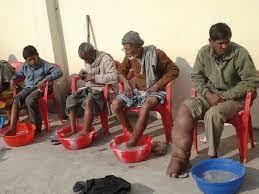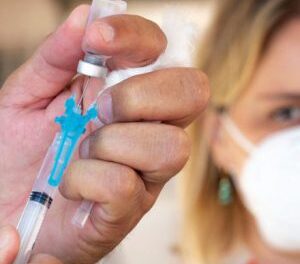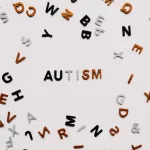In a significant stride towards the elimination of Lymphatic Filariasis (LF) in India, 138 districts have successfully cleared the Transmission Assessment Survey-I (TAS-I) and halted the Mass Drug Administration (MDA). This milestone represents 40% of the total districts endemic to LF, highlighting the country’s progress in combating this debilitating disease.
Lymphatic Filariasis, commonly known as elephantiasis, affects the lymphatic system and can cause severe swelling and disability. The Sarva Dawa Sevan or Mass Drug Administration (MDA) has been a cornerstone strategy for the Elimination of Lymphatic Filariasis (ELF) since its adoption in 2004. The MDA is conducted annually, aiming to reduce the transmission of the disease by administering preventive medication to at-risk populations.
According to the National Center for Vector Borne Disease Control (NCVBDC), a total of 345 districts across 20 States and Union Territories in India are endemic for LF. The progress of these districts is measured through three phases of the Transmission Assessment Survey (TAS). The recent data reveals that:
- 138 districts have cleared TAS-I.
- 128 districts have cleared TAS-II.
- 106 districts have cleared TAS-III.
Clearing TAS-I indicates that these districts have successfully reduced the prevalence of LF to a level where Mass Drug Administration (MDA) can be stopped, moving towards the next phase of elimination efforts. Clearing TAS-II and TAS-III further confirms sustained reductions in transmission and prevalence.
The success of Sarva Dawa Sevan reflects the concerted efforts of health workers, government agencies, and community participation. Continued surveillance and targeted interventions will be crucial to ensure that the progress made is sustained and expanded to other endemic districts.
As India moves closer to the goal of eliminating Lymphatic Filariasis, the achievements in these 138 districts serve as a testament to the effectiveness of the MDA strategy and the resilience of the affected communities. The ongoing commitment to public health initiatives and disease control measures will be vital in eradicating LF and improving the quality of life for millions.
| State wise TAS-1, TAS-2 and TAS-3 status | |||
| State | TAS-1 (Cleared) | TAS-2
(Cleared) |
TAS-3
(Cleared) |
| Andaman and Nicobar Islands | 3 | 2 | 2 |
| Andhra Pradesh | 9 | 8 | 8 |
| Assam | 12 | 12 | 11 |
| Bihar | 0 | 0 | 0 |
| Chhattisgarh | 3 | 2 | 0 |
| Dadra and Nagar Haveli
and Daman and Diu |
3 | 2 | 2 |
| Goa | 2 | 2 | 2 |
| Gujarat | 17 | 16 | 14 |
| Jharkhand | 0 | 0 | 0 |
| Karnataka | 5 | 3 | 3 |
| Kerala | 9 | 9 | 9 |
| Lakshadweep | 1 | 1 | 0 |
| Madhya Pradesh | 4 | 3 | 2 |
| Maharashtra | 8 | 8 | 8 |
| Odisha | 9 | 9 | 7 |
| Puducherry | 1 | 1 | 1 |
| Tamil Nadu | 25 | 25 | 25 |
| Telangana | 14 | 14 | 3 |
| Uttar Pradesh | 1 | 1 | 1 |
| West Bengal | 12 | 10 | 8 |
| Total | 138 | 128 | 106 |
The Union Minister of State for Health and Family Welfare, Shri Prataprao Jadhav stated this in a written reply in the Raja Sabha yesterday.












